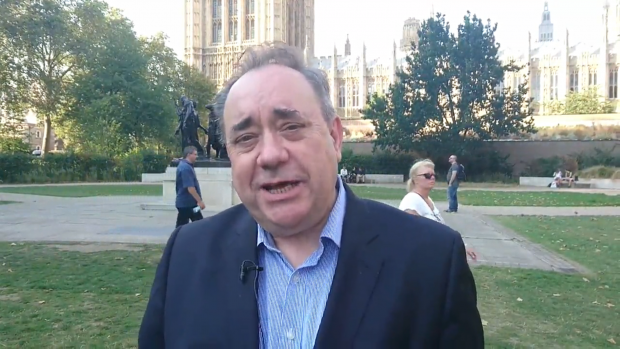Alex Salmond has demanded a rerun of the 2014 independence referendum if polls hit a tipping point in favour of the break-up of the UK.
The former SNP leader has urged Nicola Sturgeon to “push the button” on a second vote.
His comments came while his successor announced she would take further steps towards a second plebiscite in the coming days.
A number of polls in the aftermath of the Brexit vote demonstrated majority support for independence, but more recent surveys show support has fallen back beneath the halfway mark.
In the interview with The House magazine, the Gordon MP claimed he called Scotland’s first referendum when just over a quarter of Scots backed independence.
But, according to the polling website WhatScotlandThinks, average support for separation was at 35% – or 41% with undecided voters removed – when he announced the ballot in 2012.
In the interview, Mr Salmond said: “There have been six opinion polls since the European vote [on June 23]. Three of which have shown a majority for independence and the other three have all shown an increase from 45%.
“Will Nicola Sturgeon push the button on a referendum if support for independence is, say, 50:50 or at that level? Well, I hit the button for a referendum when support was 27%. Why would she be reluctant on a much larger level than that?”
The former First Minister, who delivered the party’s first government in 2007 and a majority in 2011, also claimed Theresa May would be forced to drop her opposition to another independence referendum if the Scottish Parliament voted for one.
Mr Salmond said: “It’s possible the Government could accept the first minister’s very reasonable demand that Scotland be kept within the single marketplace, which is her [Sturgeon’s] red line.
“But, my guess is that they won’t do it, because there’s nothing about the prime minister’s disposition in her weeks in office that suggests she is at all flexible, sensitive, or responsive to Scotland’s legitimate claims….and, therefore, there will be a referendum.
“David Cameron claimed there wouldn’t be a referendum, he said he wouldn’t allow a referendum, and then, when faced with a parliamentary vote in Scotland for a referendum, he acquiesced, as this prime minister will do.”










